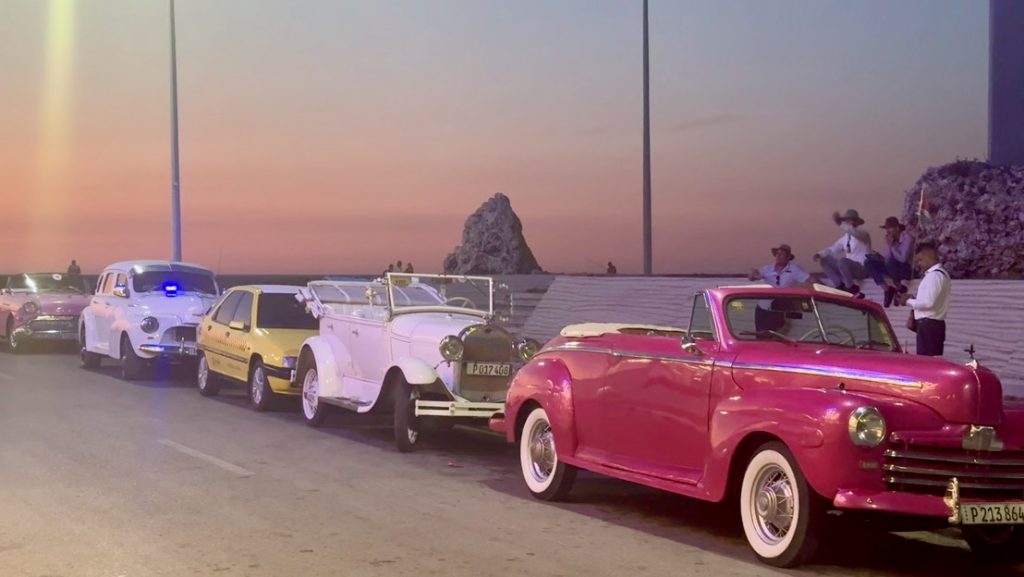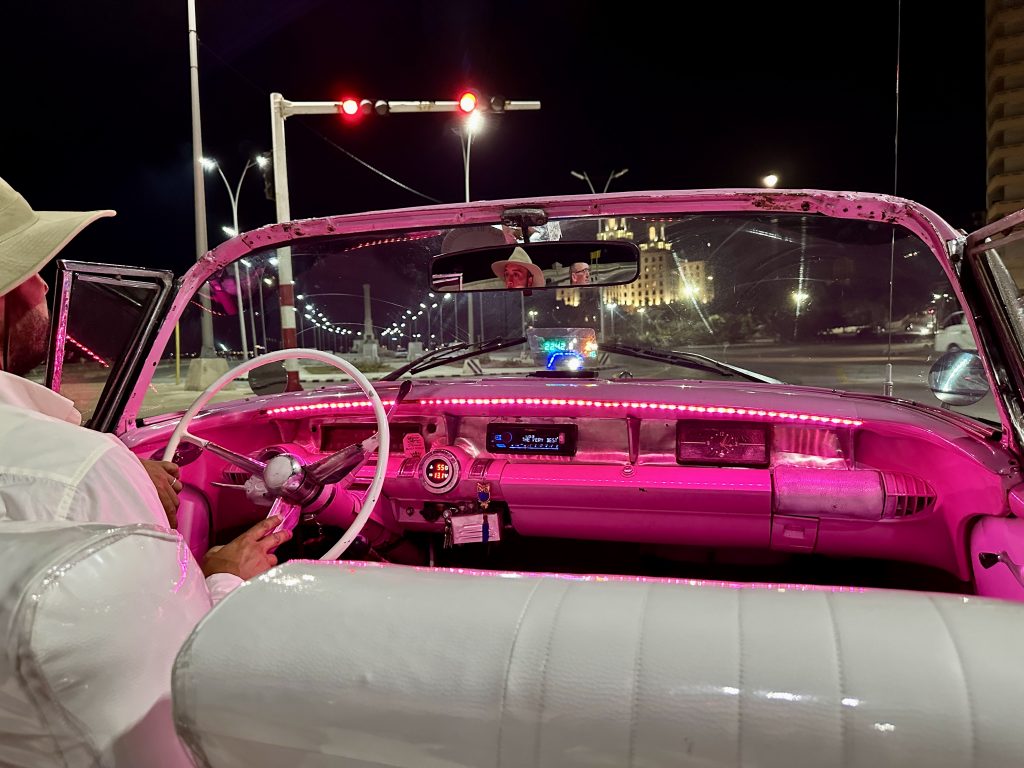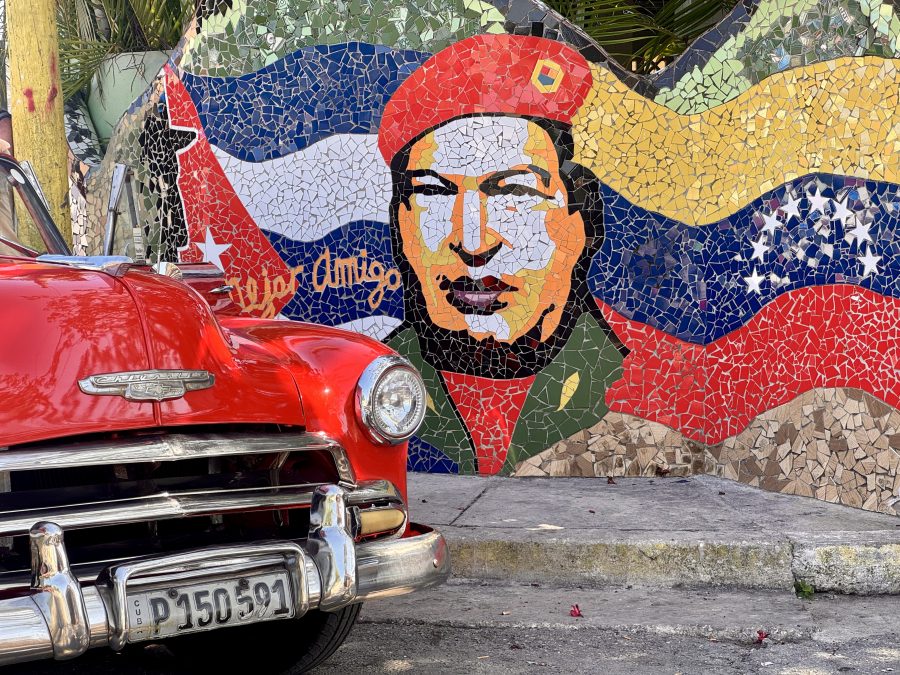When we mentioned our plans to visit Cuba for a long weekend to our US friends and colleagues, virtually everyone gave us a skeptical expression, questioning whether they’d let us in. We knew that Cuba was officially not open to American tourists, but Darren had done some extensive googling to confirm that American citizens (and that is what we are now) could in fact visit Cuba and “support the Cuban people”. Just not as “tourists”. There was extensive form filling to be done at the airport but that was about as difficult as it got. And just like that, our visas were paid for, our documentation was stamped, and we were greeted at the customs desk with a “Bienvenido a Habana”.
Think of Havana, Cuba as a stereotype and it immediately puts you in mind of rum, cigars and classic cars. And so it was only fitting that we were picked up from the airport in one such 1950s classic car and taken for a rum cocktail. No cigars, thankfully. And from then on wherever we went, there were similarly cool classic cars lined up like taxis, pimped up for the tourists-not-tourists. The roads were an odd mixture of classic cars, clapped out old Ladas, bright yellow taxis (many of which were also clapped out Ladas), tuk tuks and bicycle taxis.
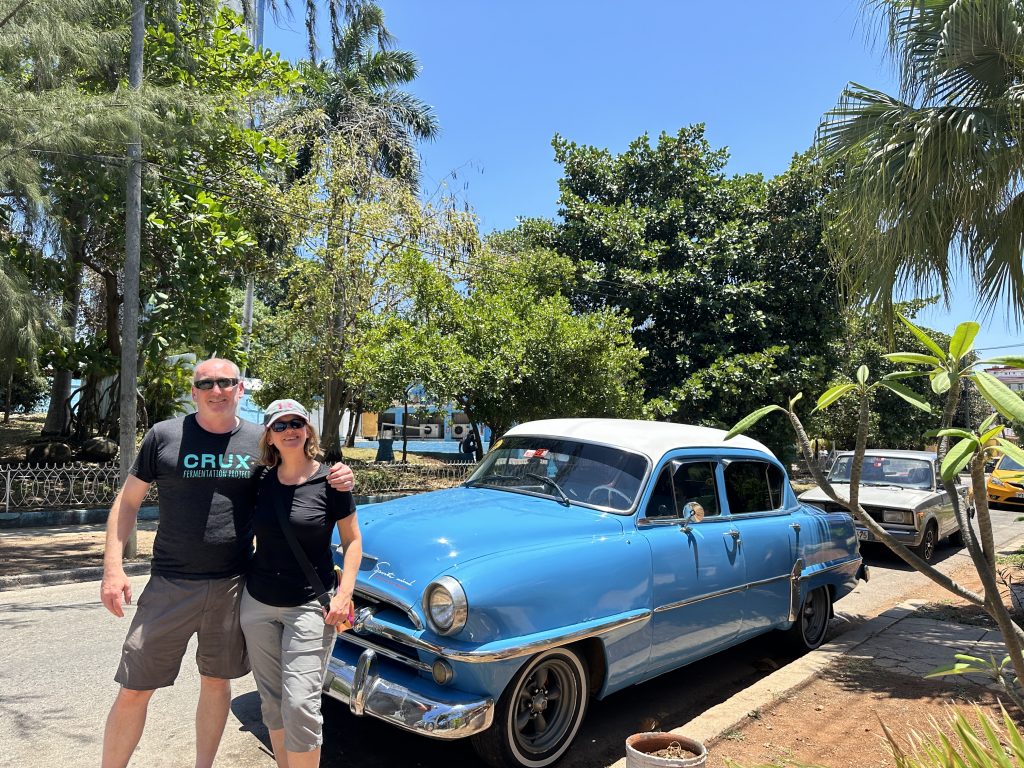
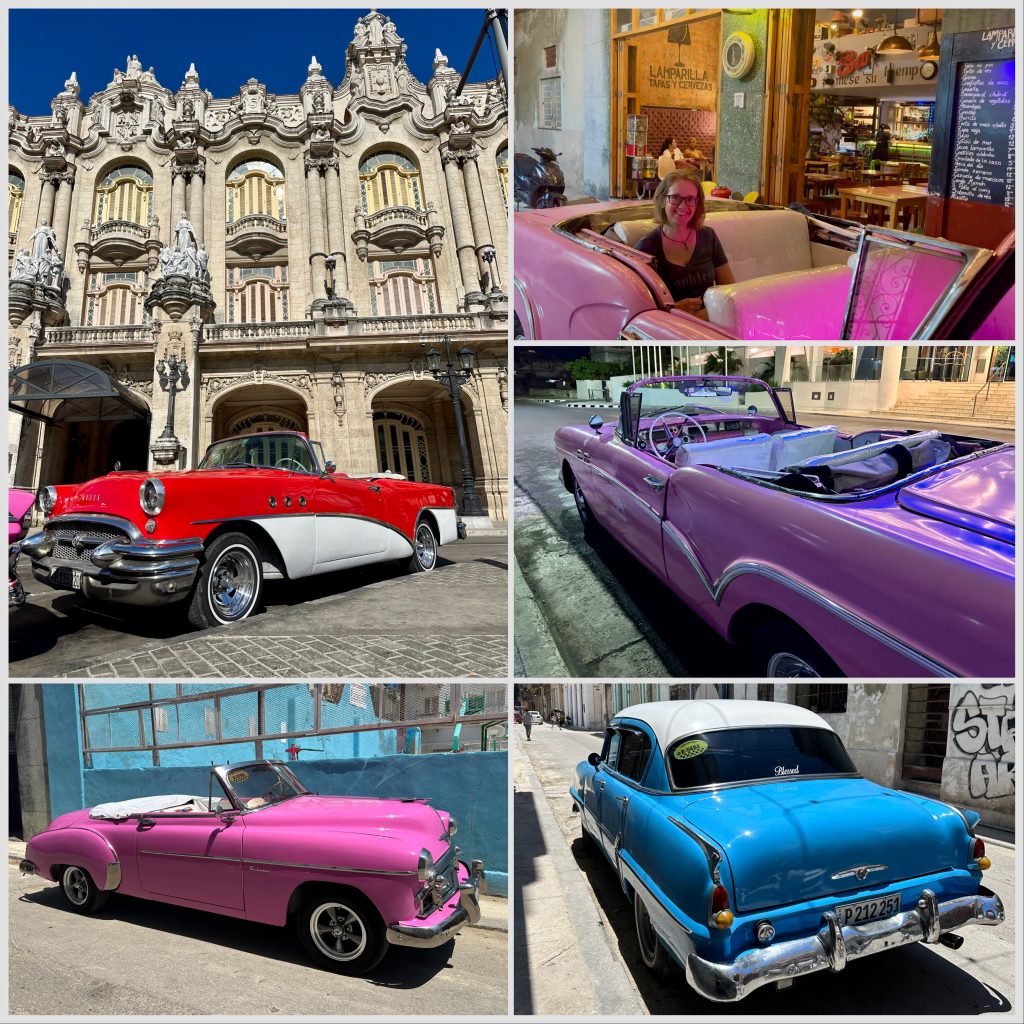
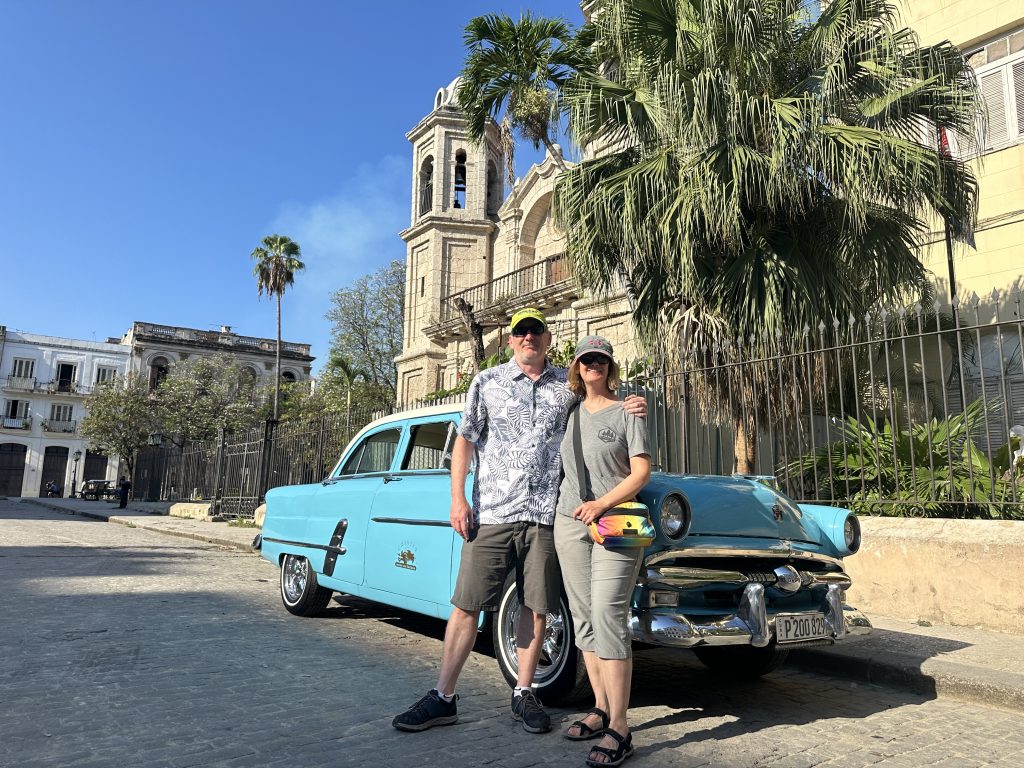
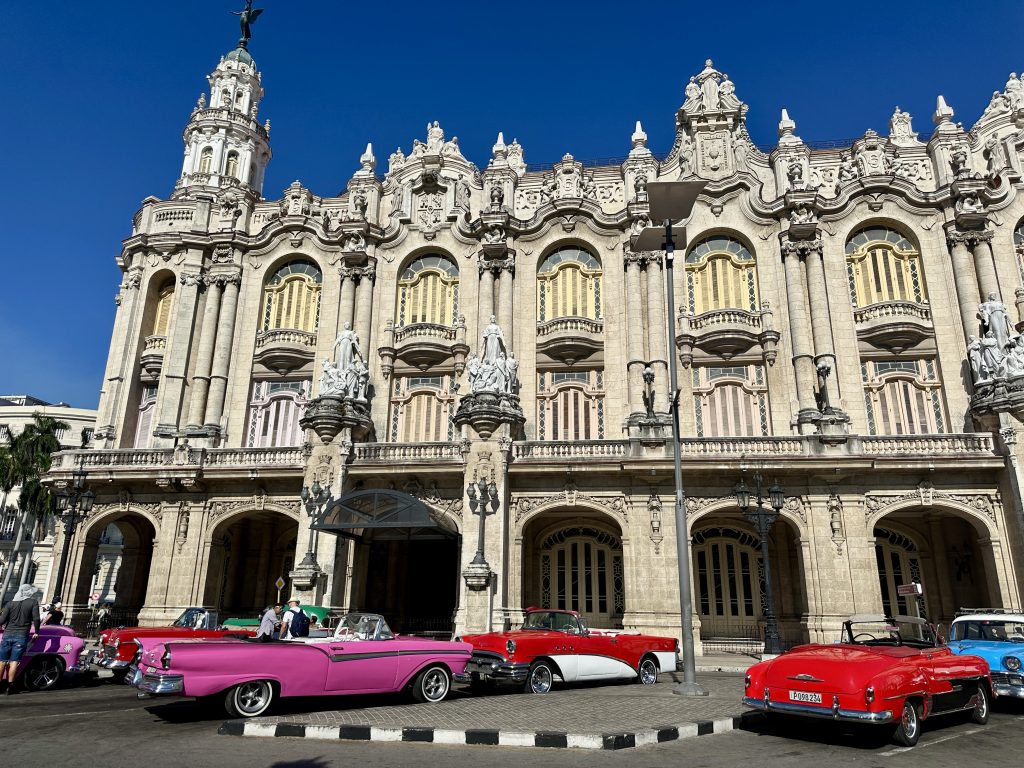
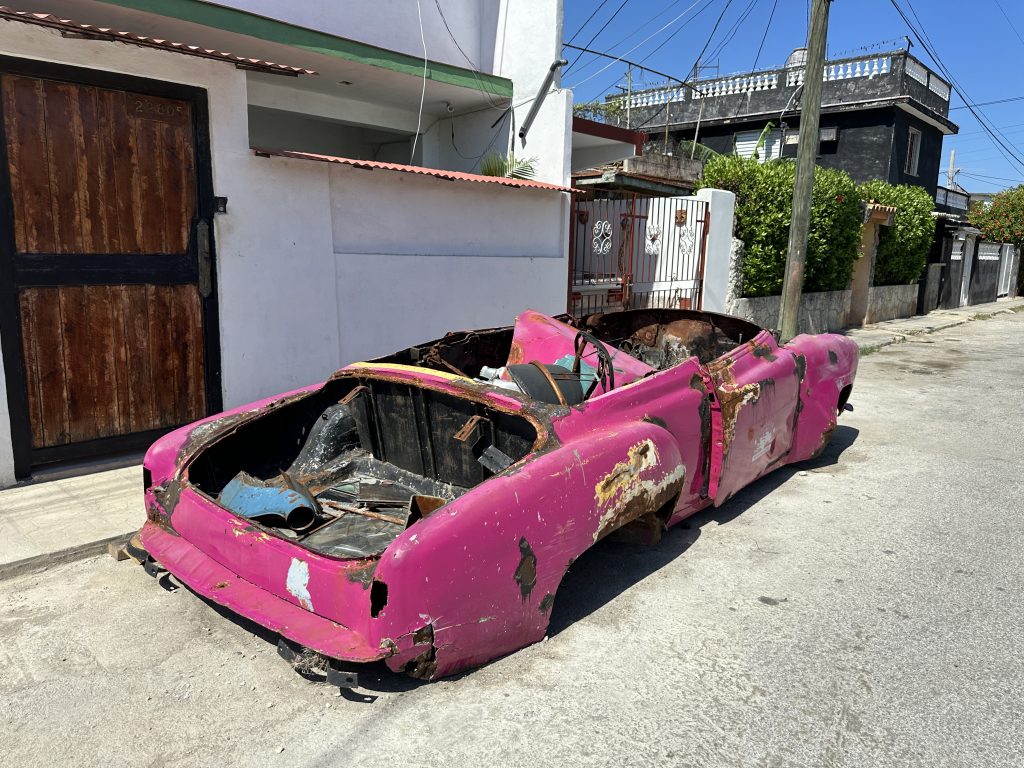
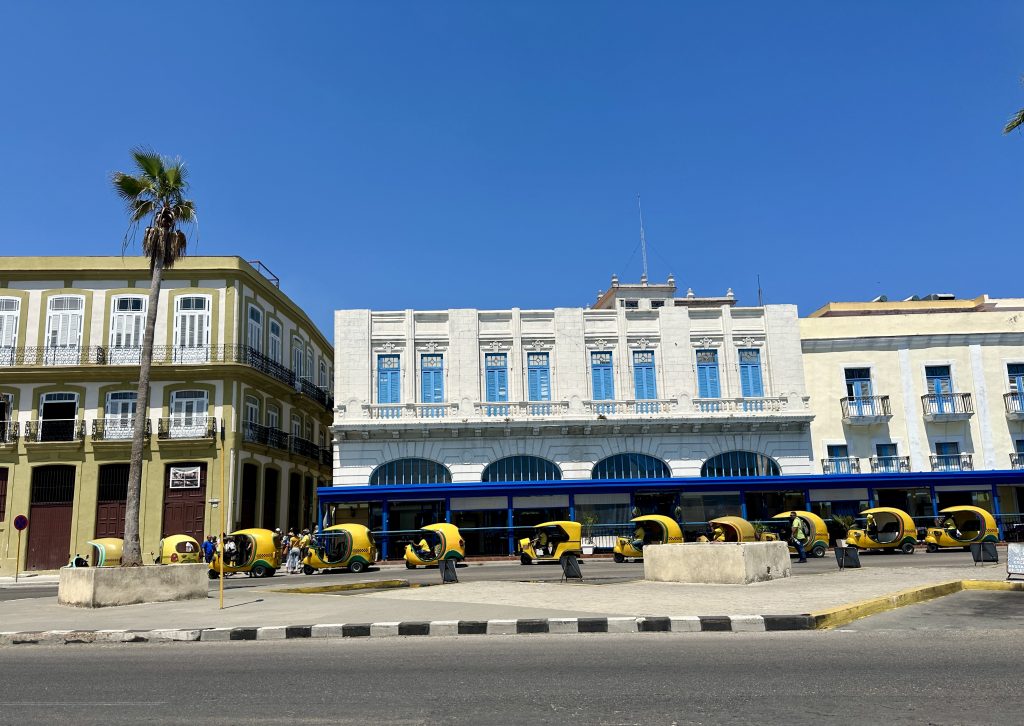
Similarly, the city of Havana was an eclectic mix of grand old government buildings, architectural masterpieces in their day and well-maintained to paint an imposing political presence, contrasted with third worldly decrepit, falling down buildings that were barely still standing. In fact, some had only the front facade of a building with an empty shell of nothingness where the rest of the building had once been.
The apartment Airbnb we were staying in was somewhere in between. In order to get there, we had to use a rickety two person lift with a metal gate pulled across. It rose so slowly it felt like there was some backstage hand manually pulling it up, and it was stifling and airless in the heat. But it transported us to a lovely decked out apartment, with a balcony and a view over the nearby rooftops (hence how we knew that some buildings were nothing but a front).
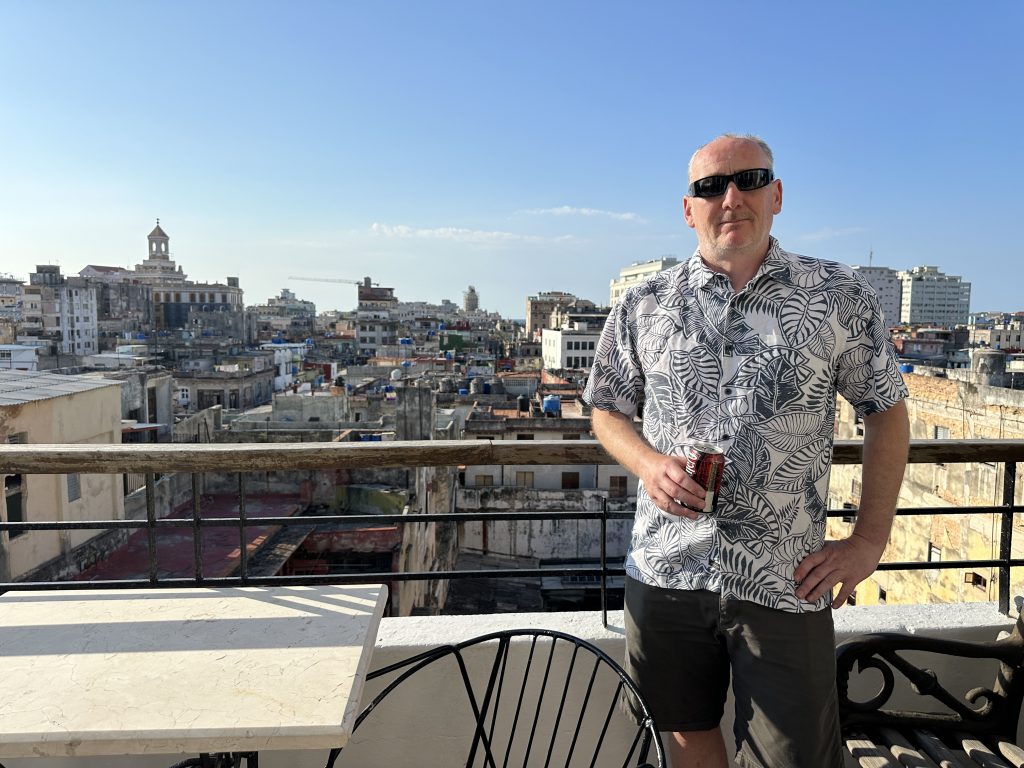
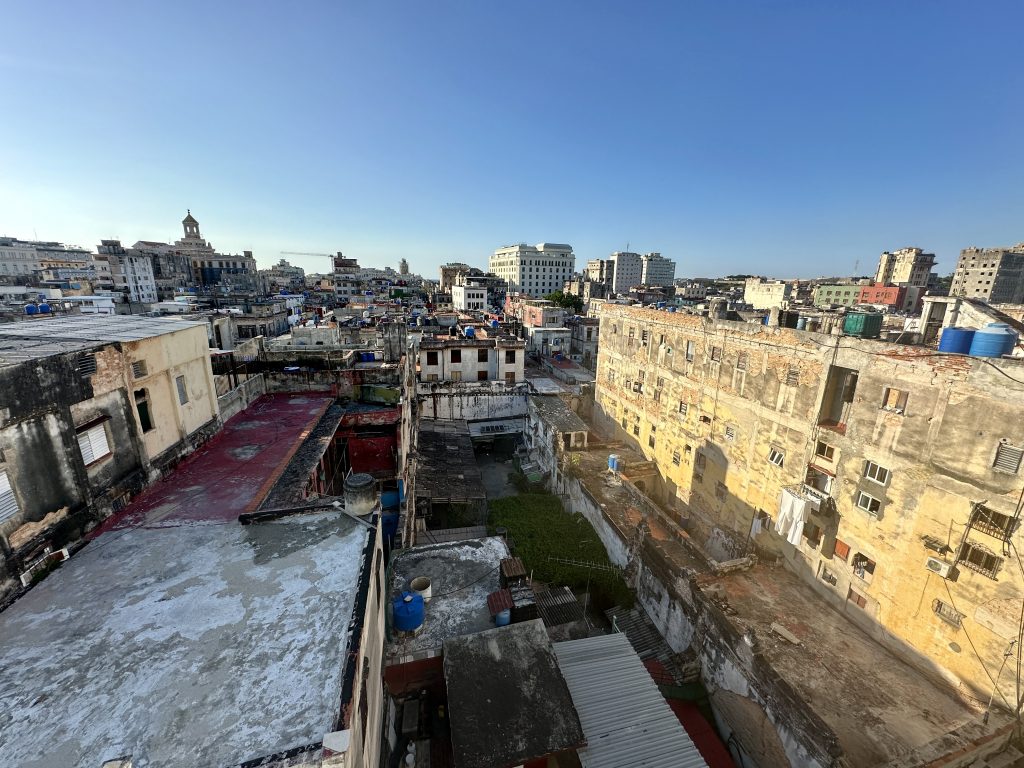
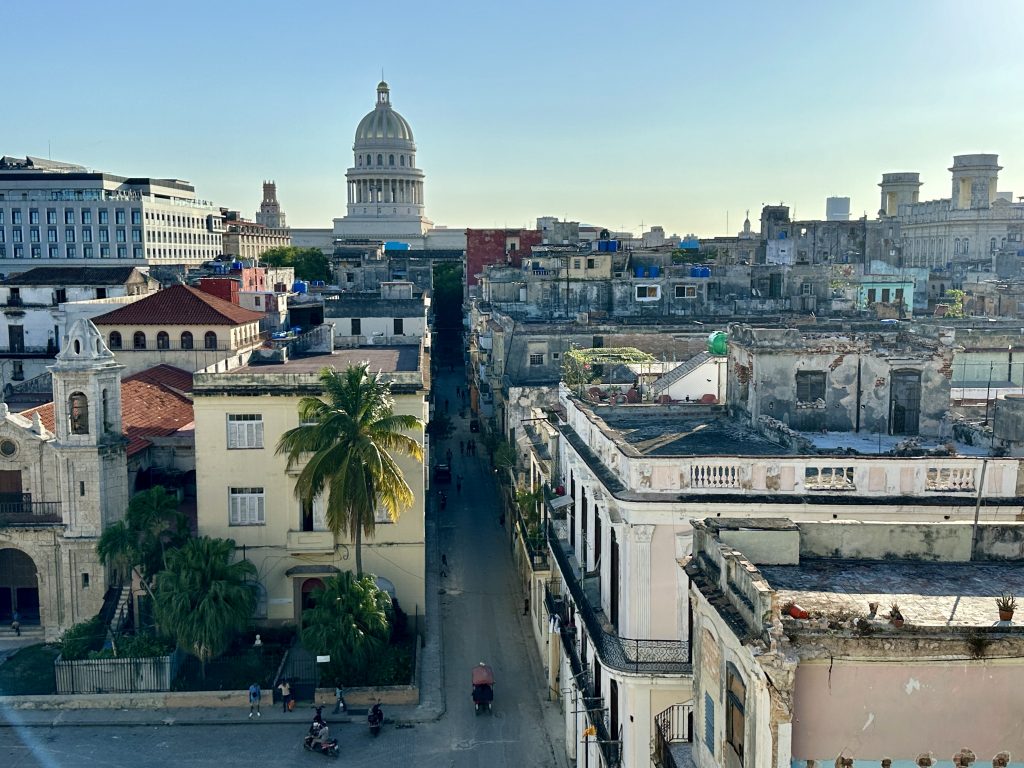
Some of the challenges of being a non-tourist in Cuba is that nothing is compatible with our normal day to day western culture. Like paying by credit card (as they’re not generally accepted anywhere and even if they were, no one wants to get ripped off with the official bank exchange rate, a far cry from the currency exchange rate you get “on the street”). So you have to carry cash. And lots of it, given the effects of inflation.
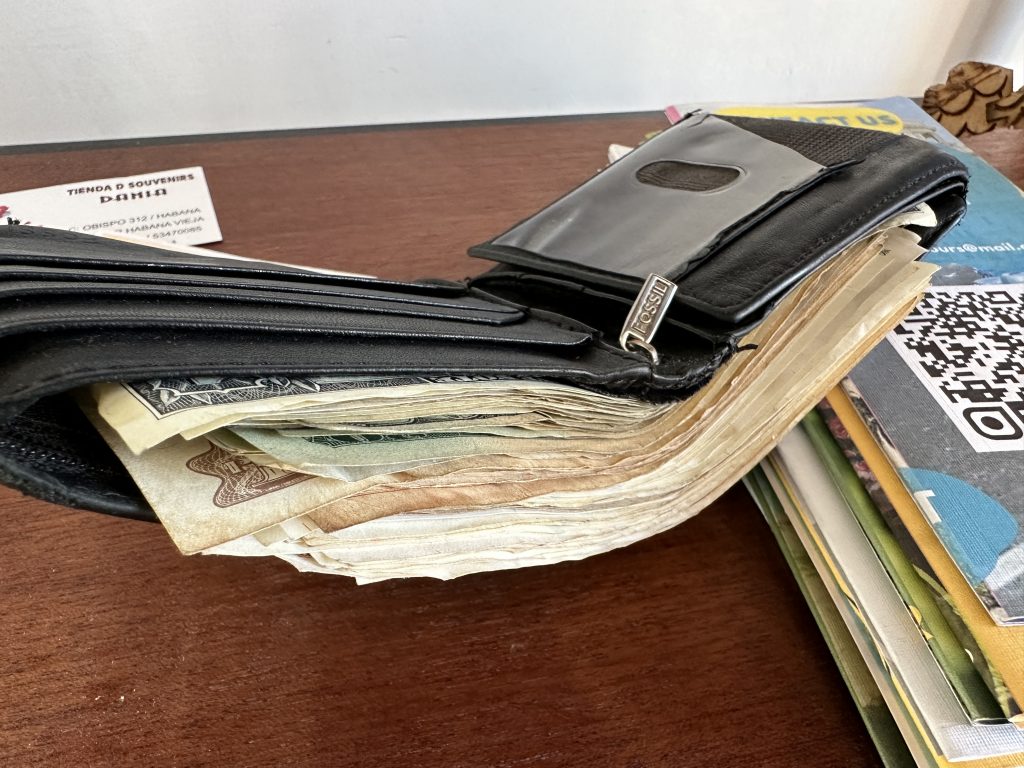
Another challenge is the lack of international roaming for your mobile phone, making it effectively useless other than as a camera. Luckily our Airbnb package came with a local SIM card fitted mobile phone (in the style of a brick), which could be used as a WiFi hotspot. In an unreliably intermittent way. So the Lonely Planet book we’d brought with us got a lot of use.
We spent lots of time wandering the streets, getting our bearings and taking in the atmosphere. Plaza Vieja, with its colored buildings and Juliette balconies was pretty as a picture in the sun. The brewery in the square was closed for renovations but they had no qualms about selling us a large bottle of beer and letting us hang out on their concrete steps in the shade. The square was ripe for people watching, literally buzzing as it became busier with school age kids appearing from every which way sporting all manner of ‘bee’ costumes. Most commonly a black and yellow t-shirt with varying headwear – yellow ribbons, black caps or my personal favorite… home-made deely-boppers balanced precariously on a black headband.
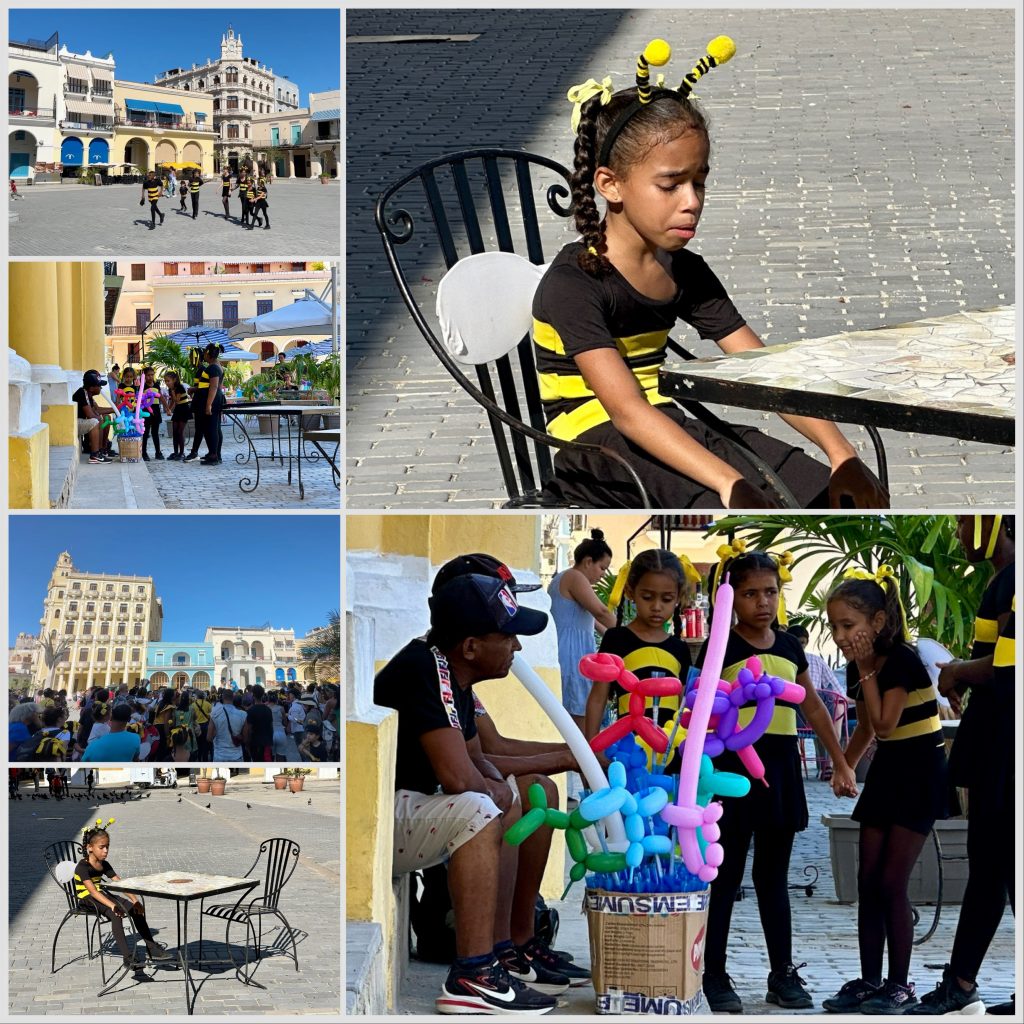
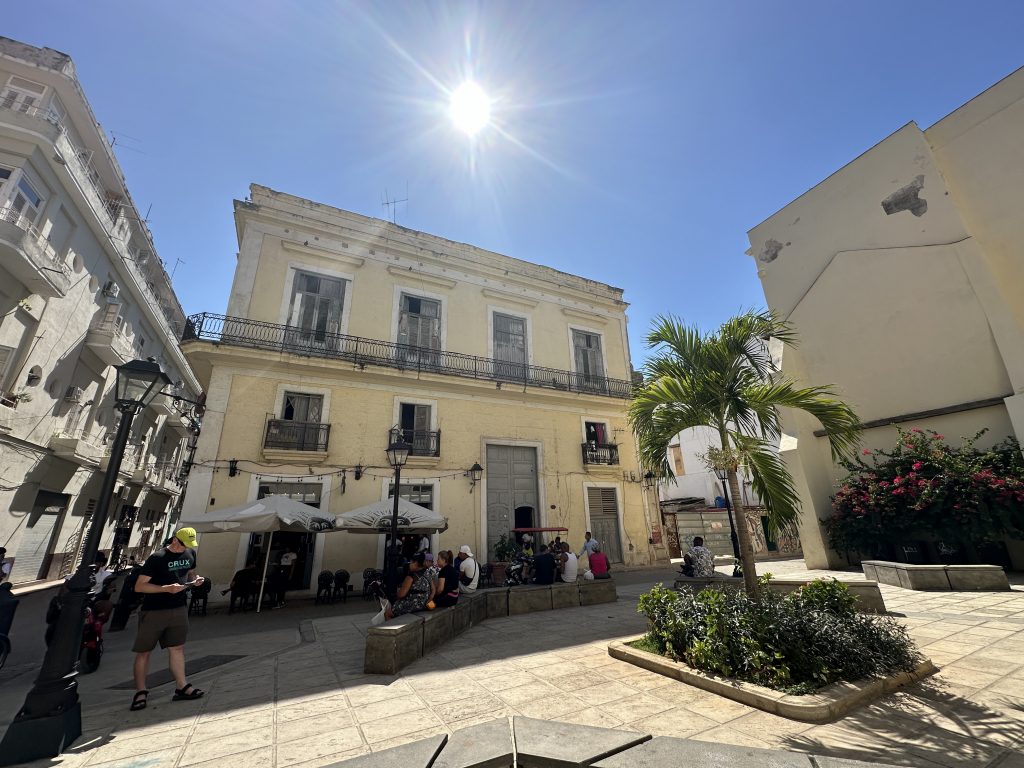
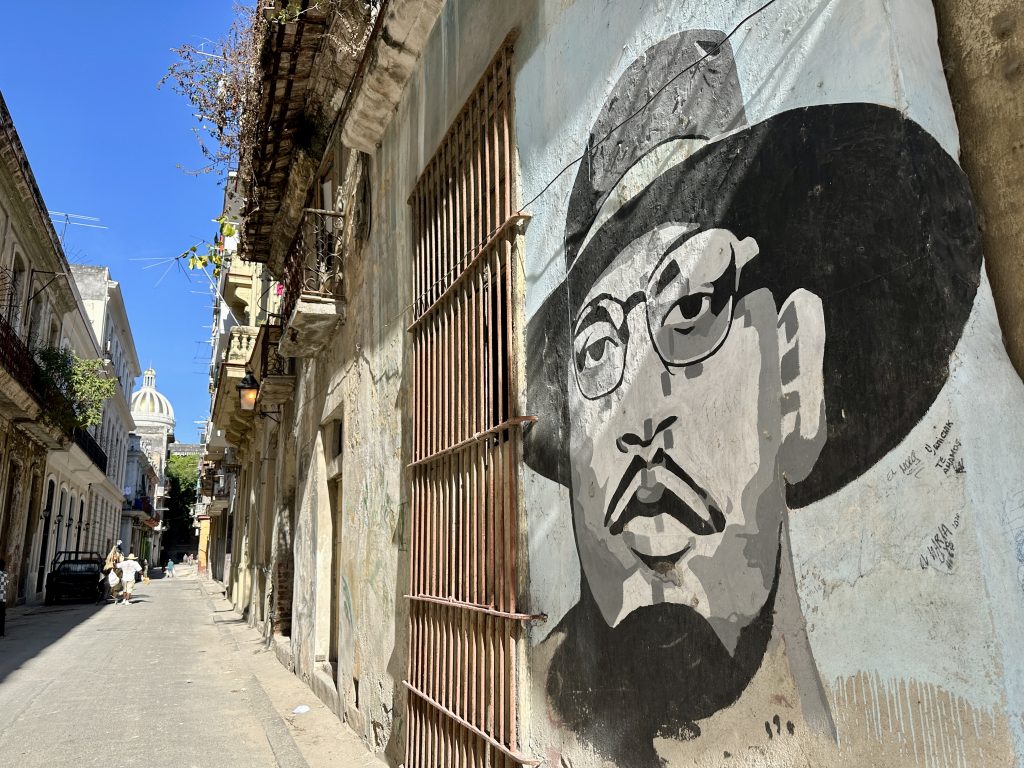
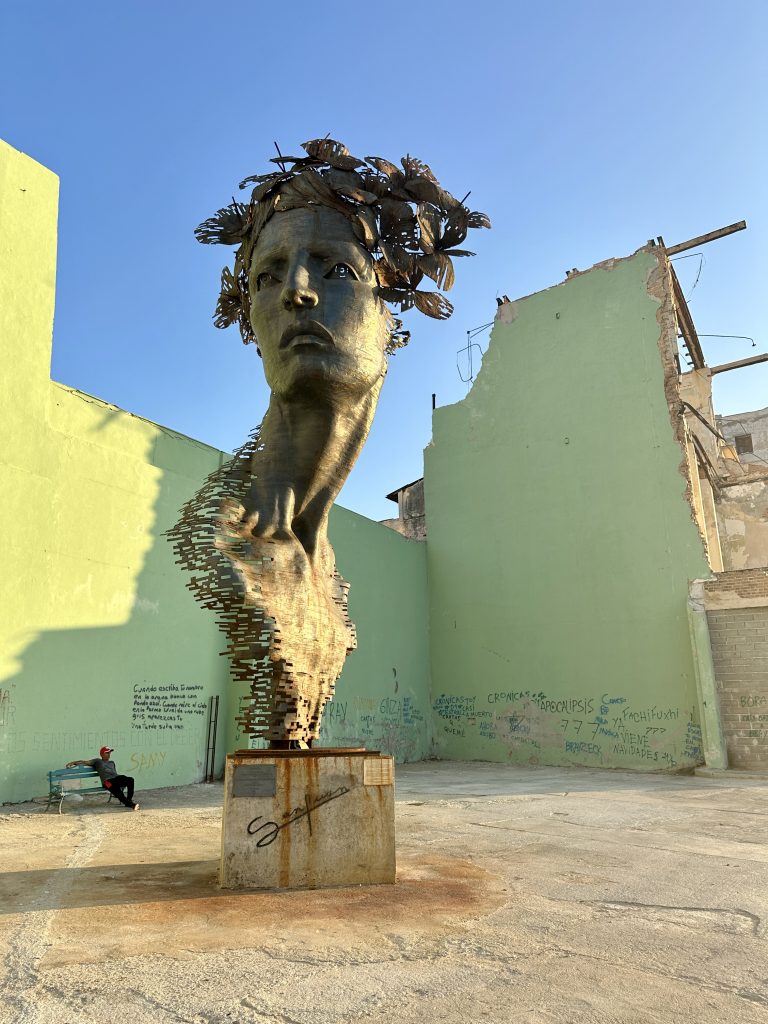
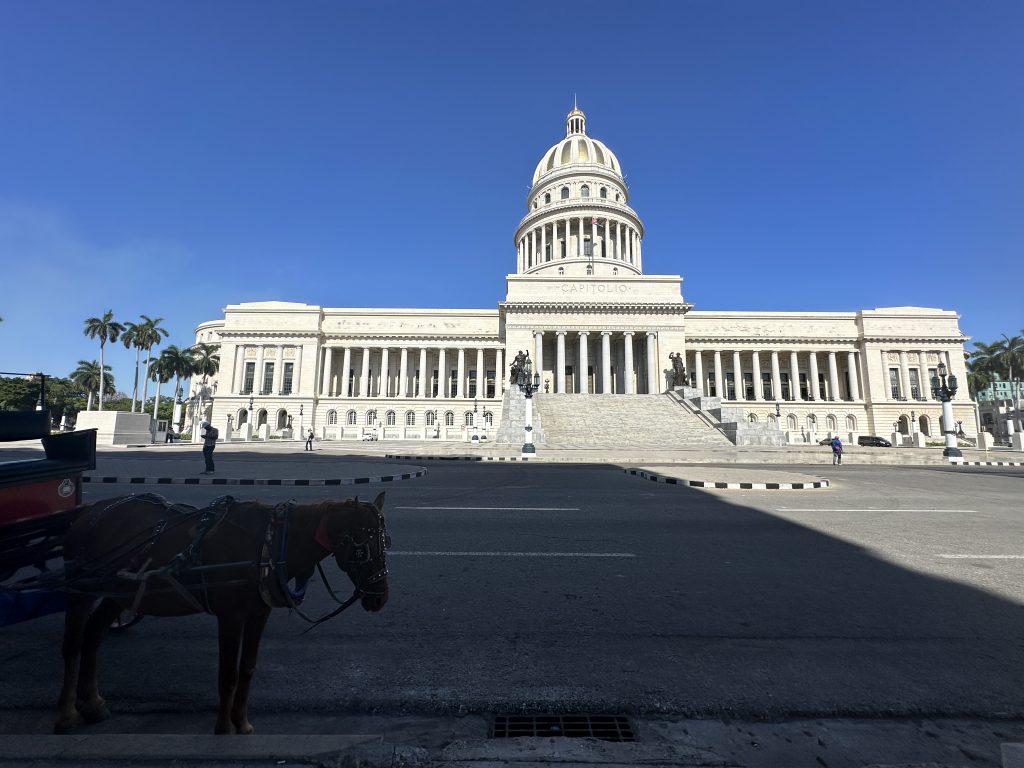
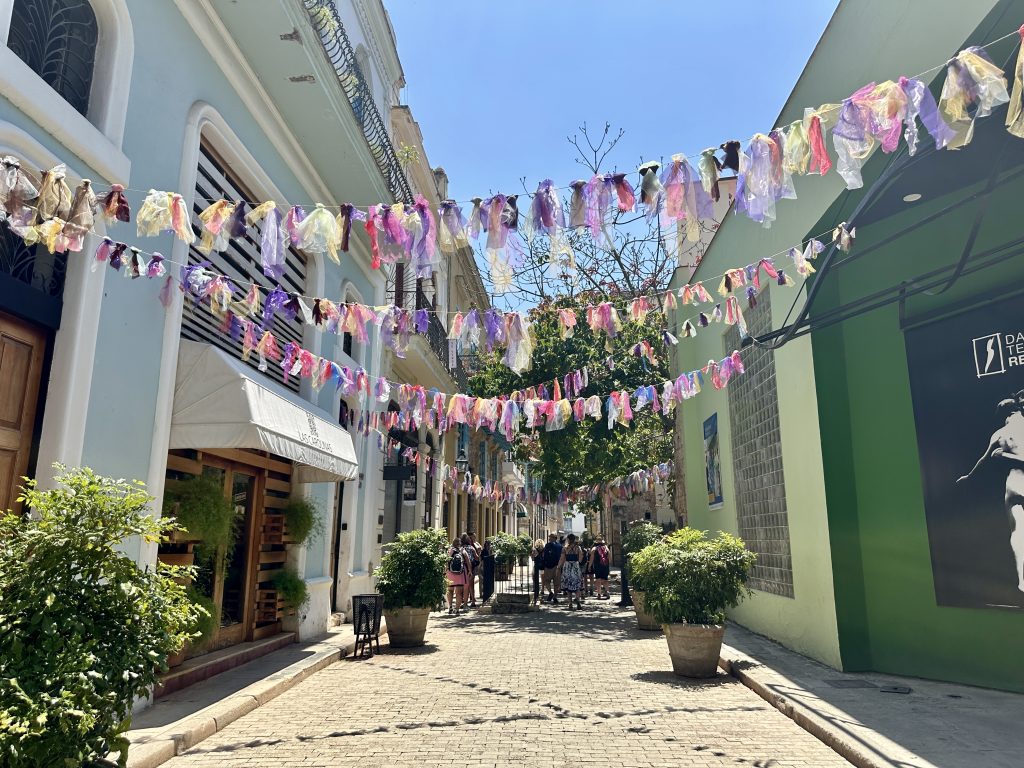
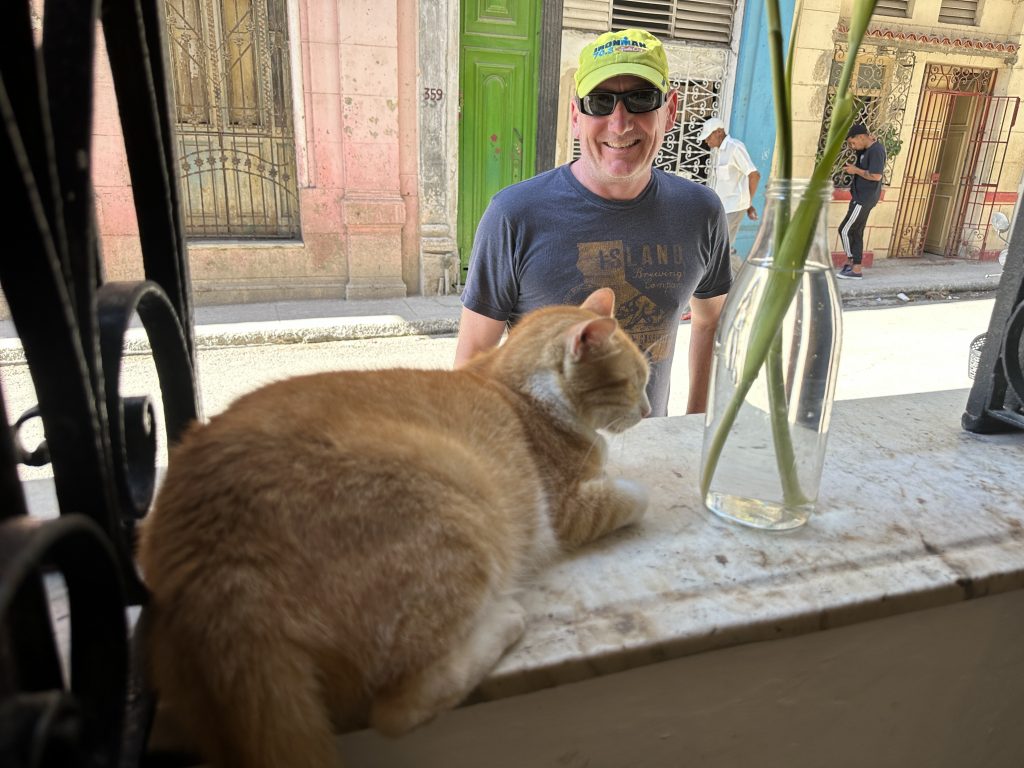
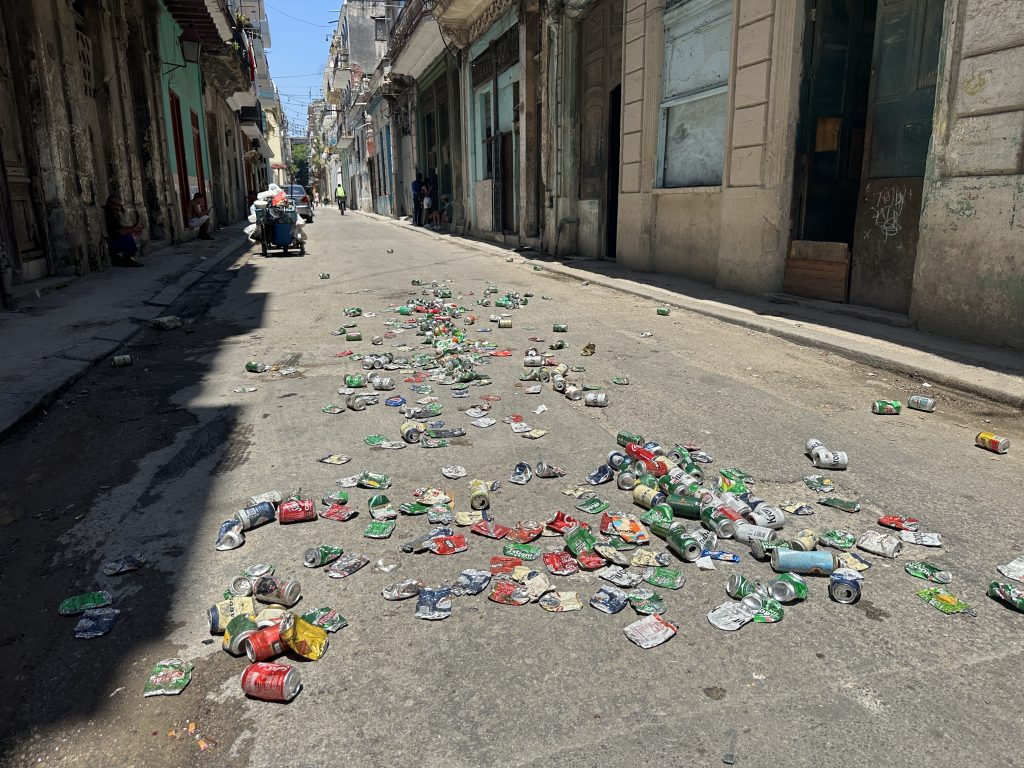
You can’t visit Havana without visiting Fusterlandia. Or so we were told. Fusterlandia is the brainchild of Cuban artist Jose Fuster, who turned his local neighborhood into a funky art wonderland. It reminded me a little bit of the Guell Park, homage to Gaudi in Barcelona, but on steroids. There’s a main house you can wander around, adorned in colorful mosaic tiles, ceramics and sculptures. But the wondery doesn’t end there, it’s an entire block party of surreal art and paintings stretching throughout the whole neighborhood. Really quite bizarre. And oddly photogenic.
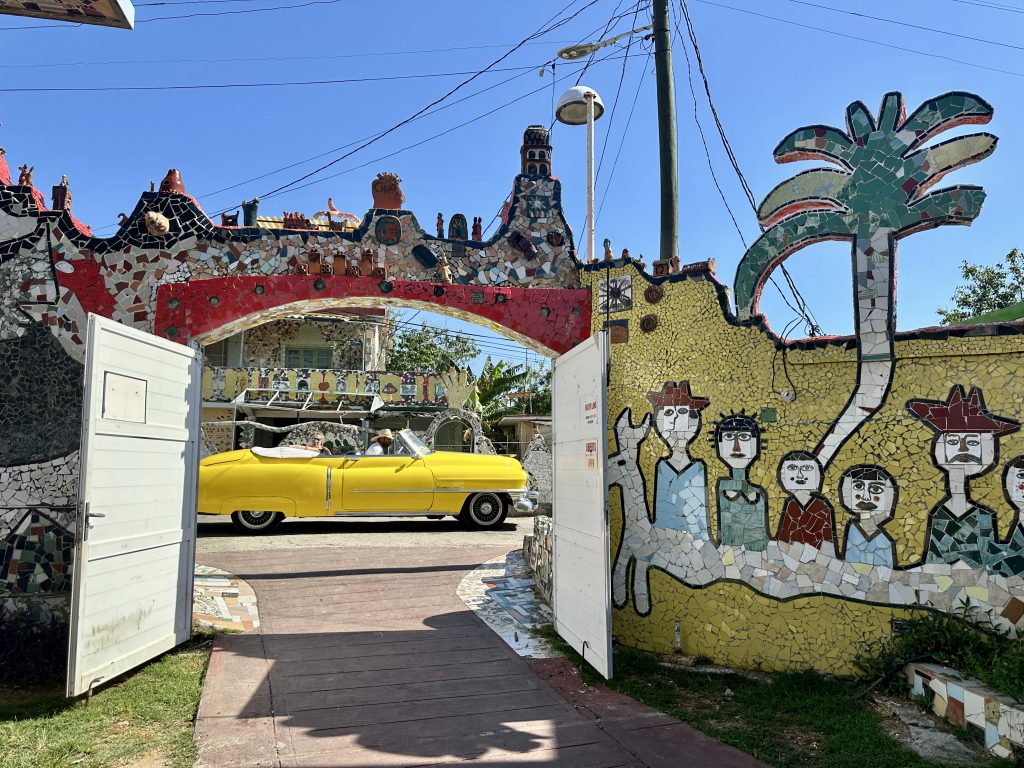
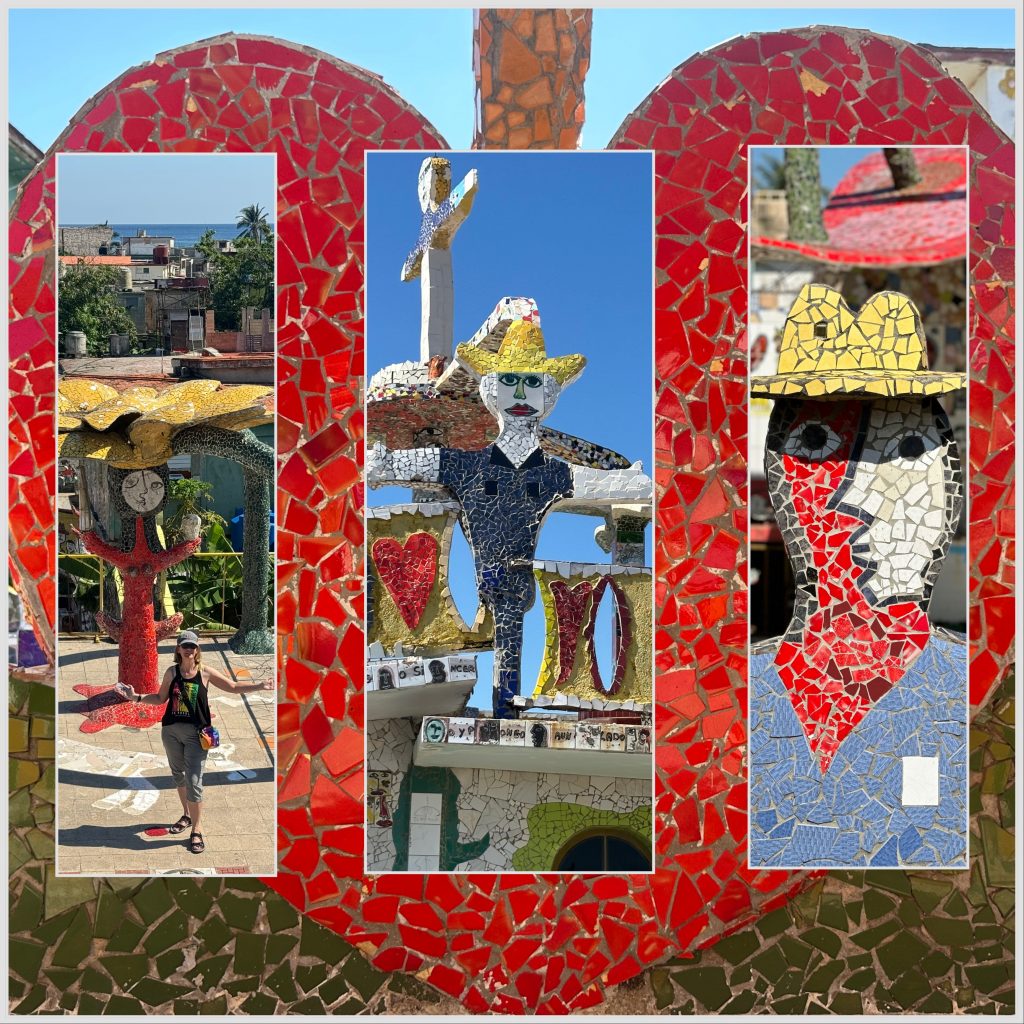
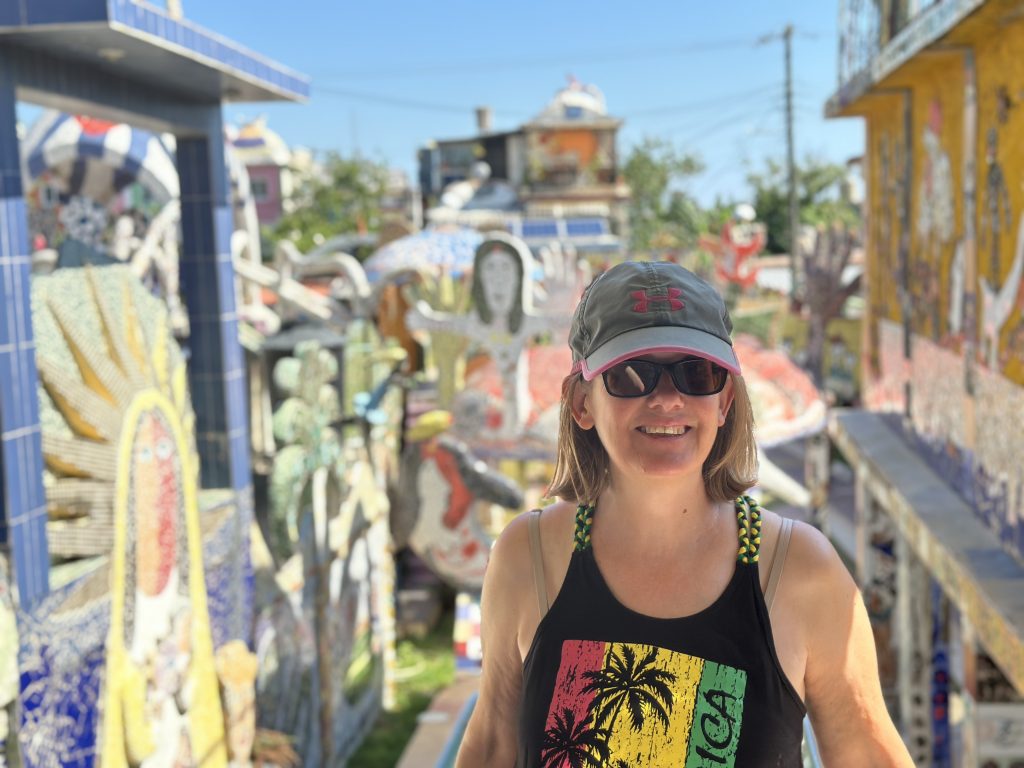
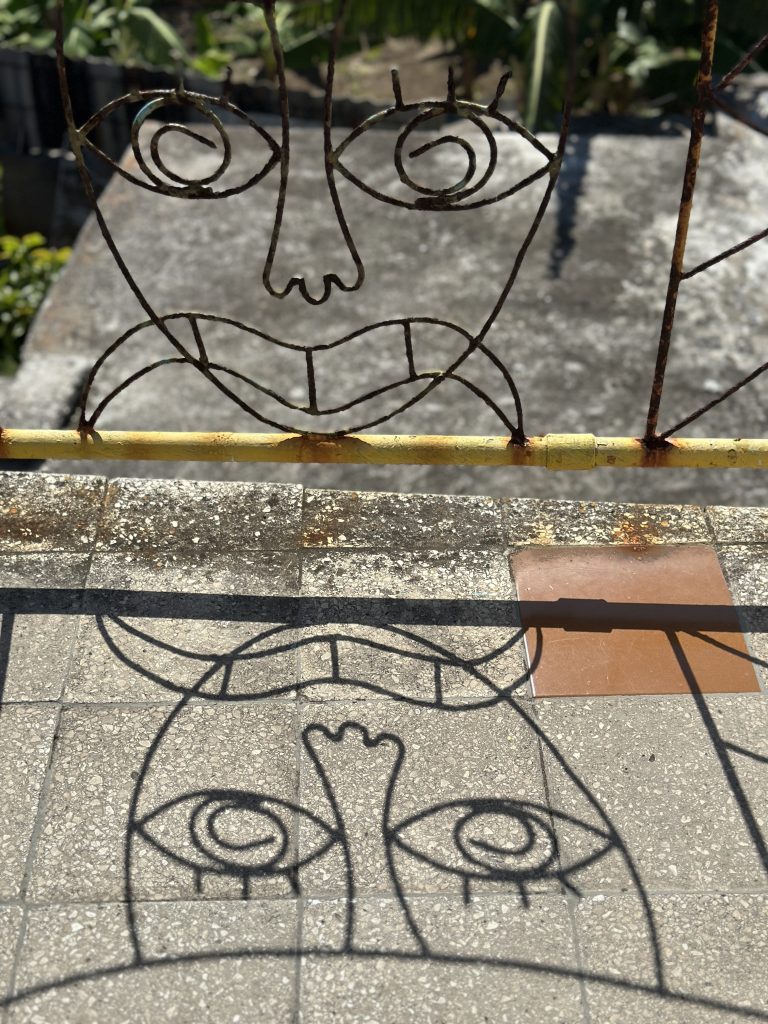
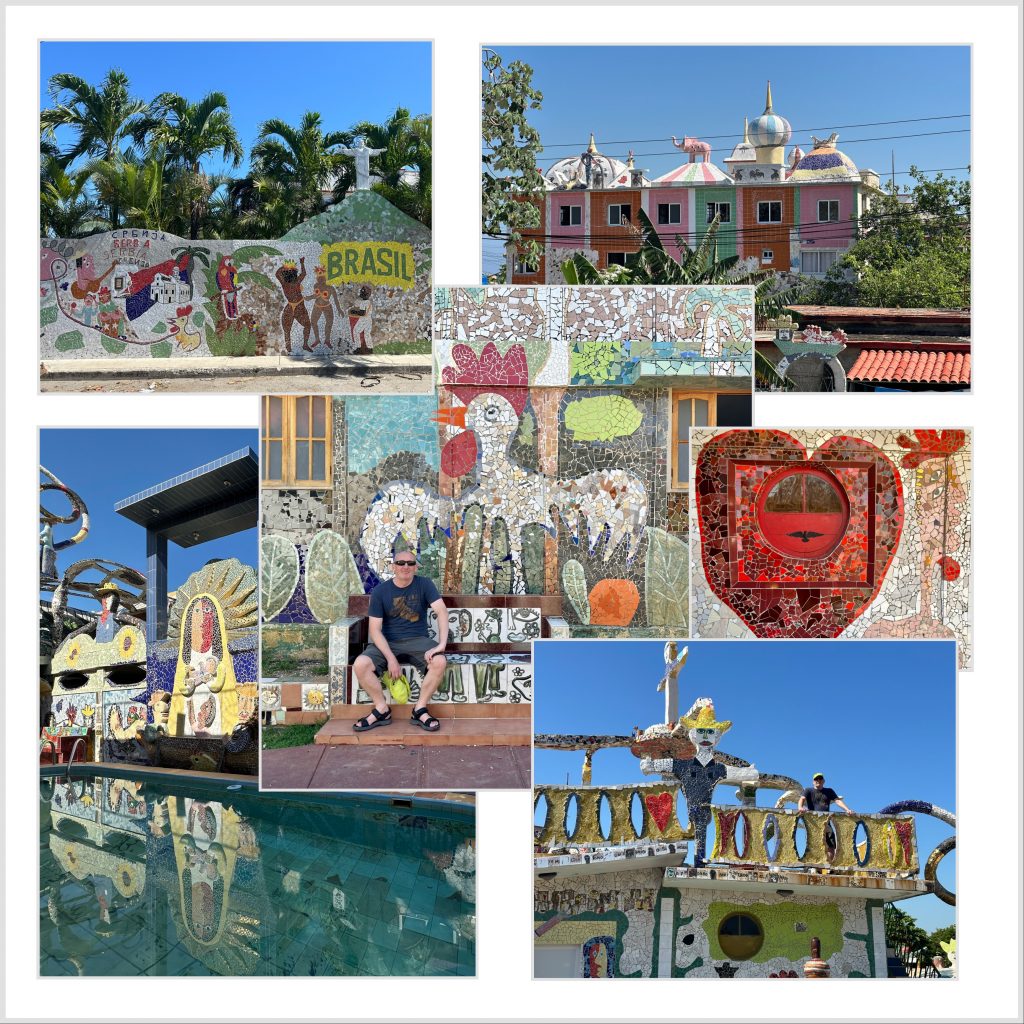
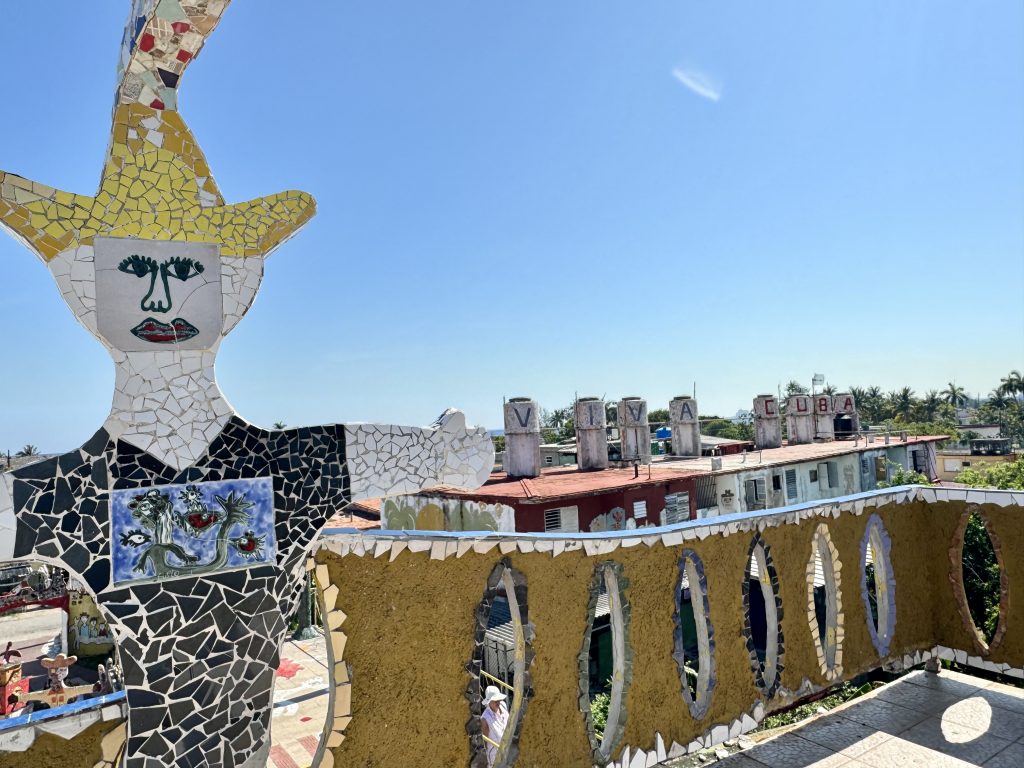
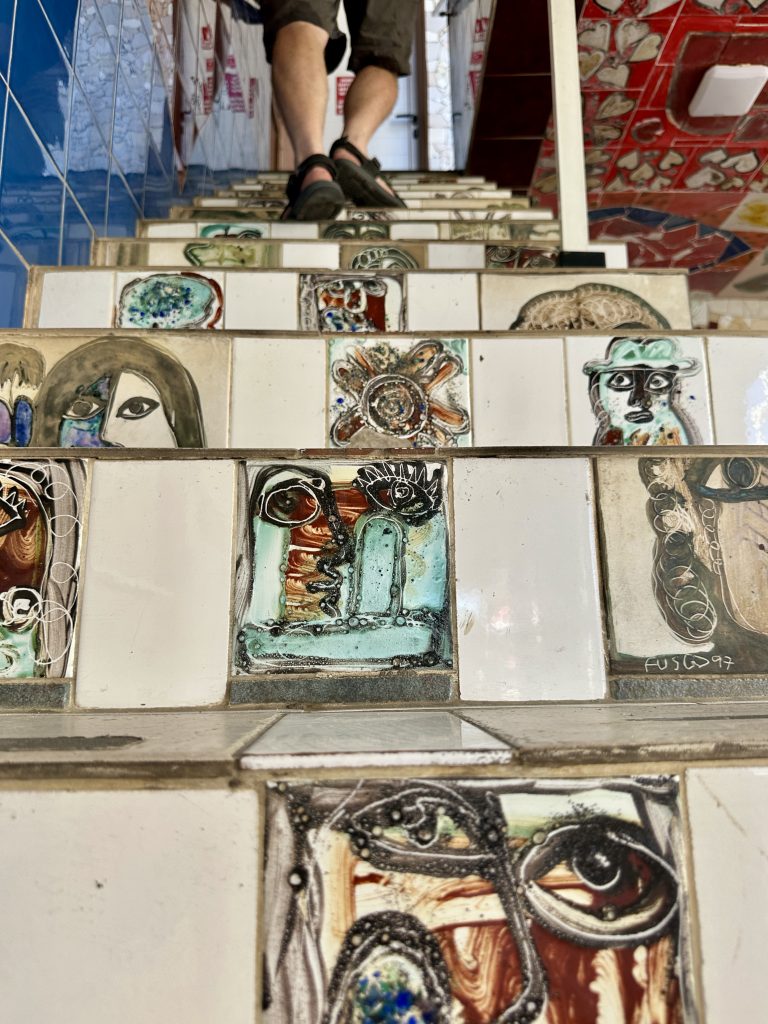
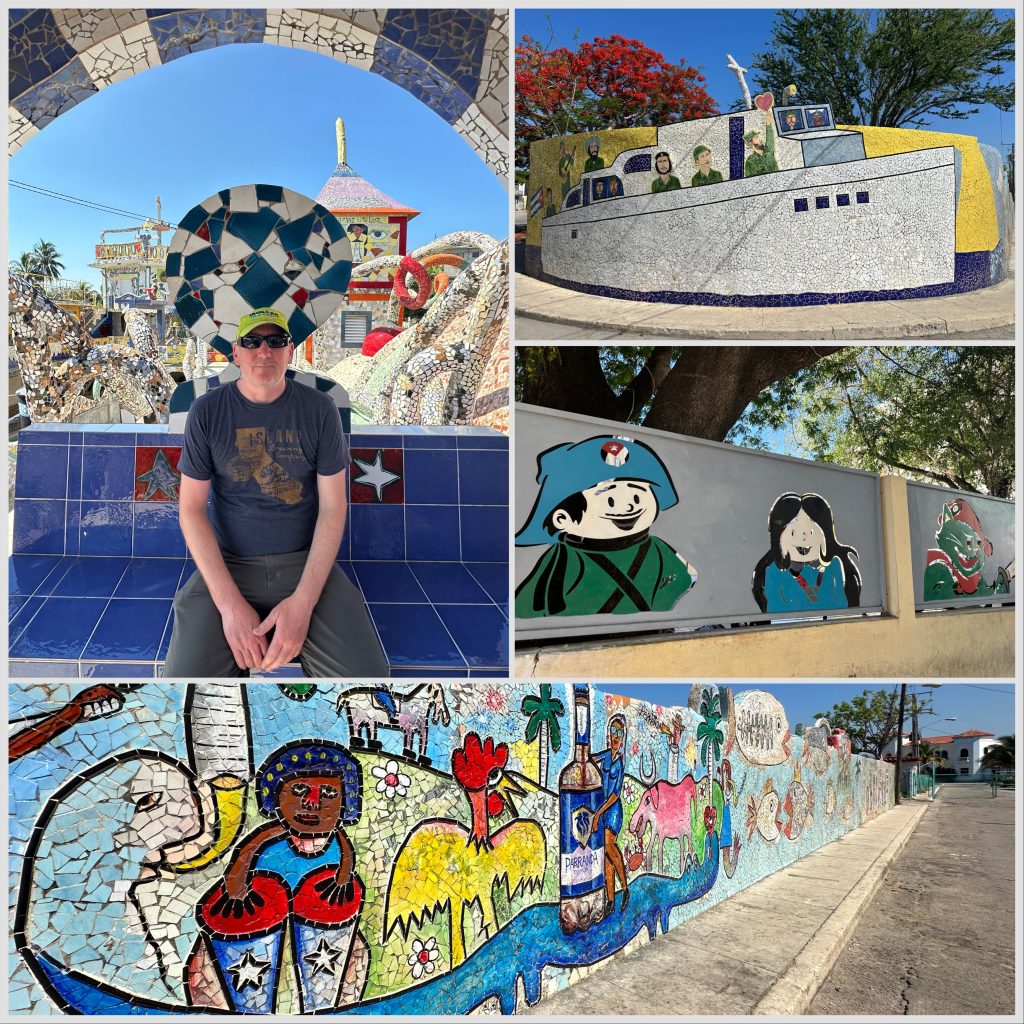
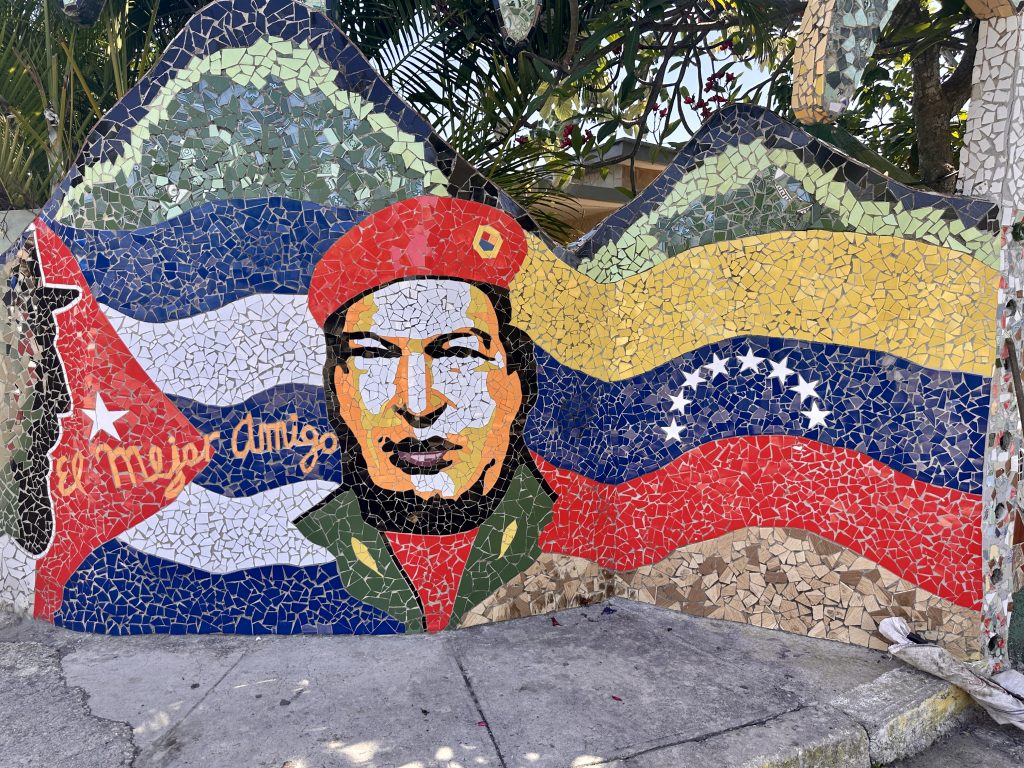
We had ourselves some great food and drink over the weekend in Havana. From a chilled out lunch place overlooking the river marina, Santy Pescador, where we shared a platter of freshly caught langoustines oozing with garlic butter…
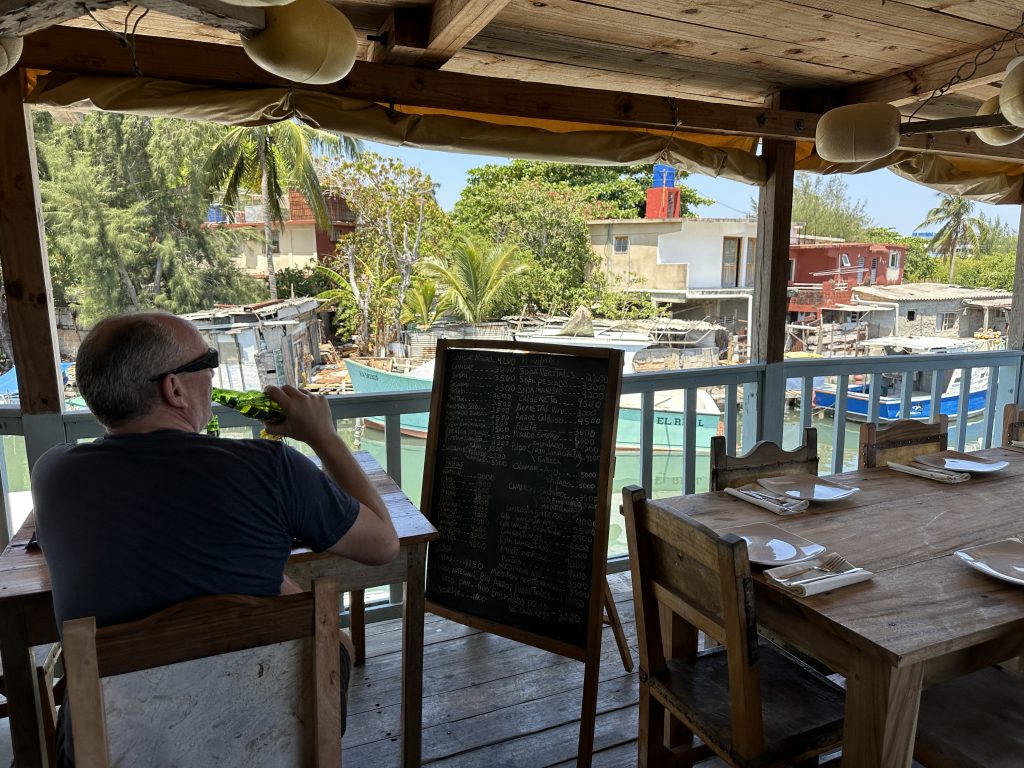
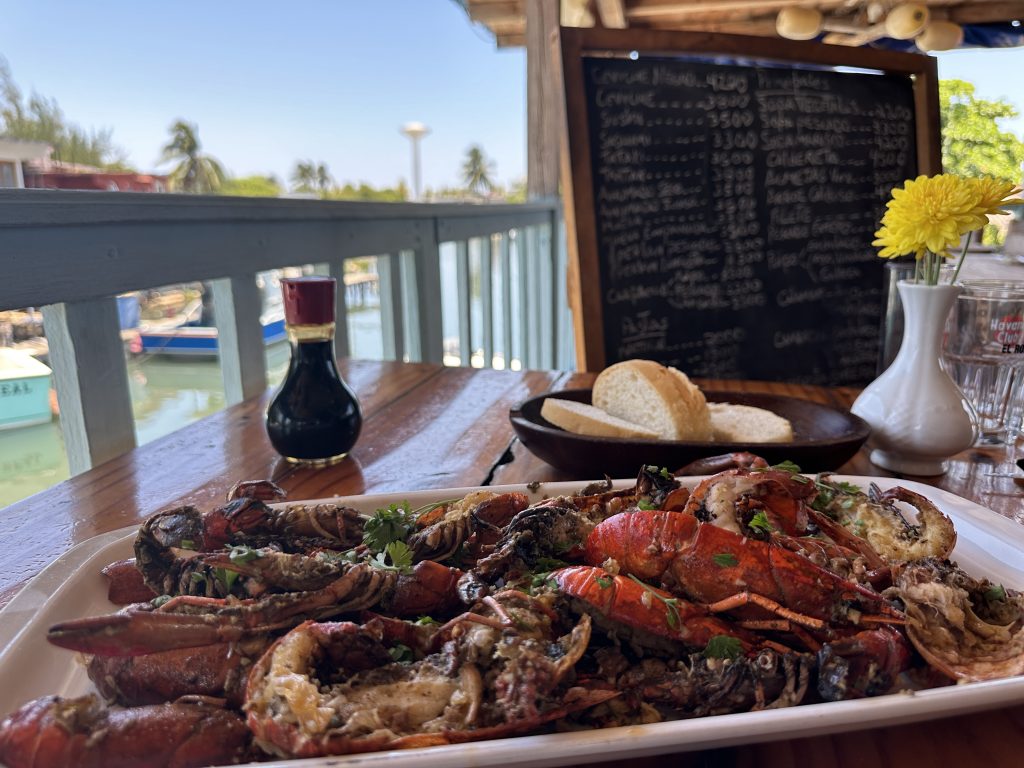
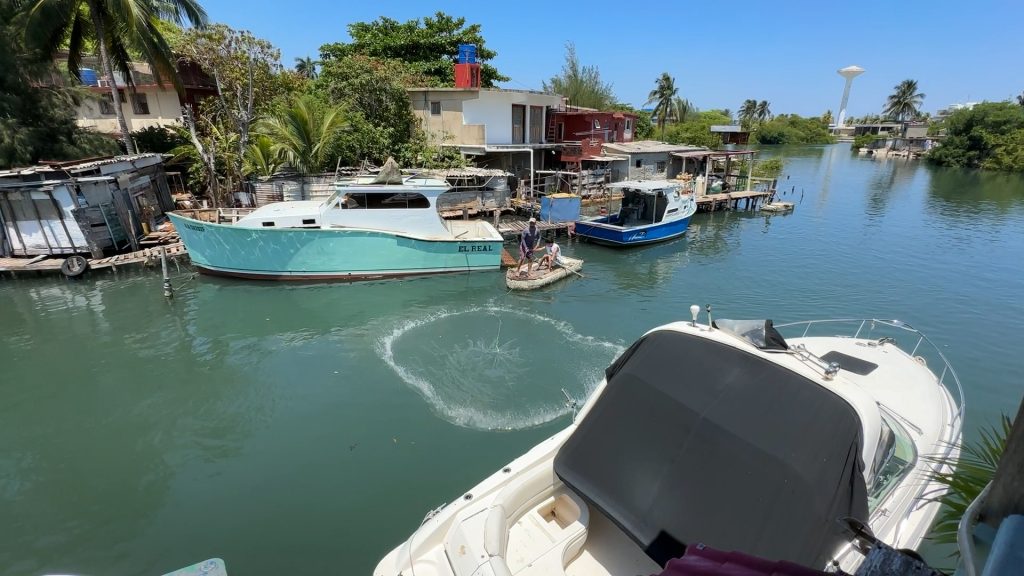
… To an upscale rooftop terrace bar (Yarini) with some rather experimental cocktails. We started with a Canchanchara, playing it relatively safe with the local specialty made of firewater, honey and lime, akin to a margarita. Nice! I then pushed the boat out with a cocktail called “To Caesar, What is Caesar”: 11 year old aged rum, curry syrup, lemon juice and basil. Yes, curry syrup. Compared to Darren, I was actually playing it safe! He had “The Black”. 7 year old aged rum and cacao liqueur shaken over ice with coconut syrup, lemon juice, aqua faba (the thick briny water you get when cooking chickpeas) and active charcoal. Strained into an itsy bitsy cocktail glass of delicate proportions that belied its true nature, it was blacker than a well settled pint of Guinness. Put it this way, we just had the one.
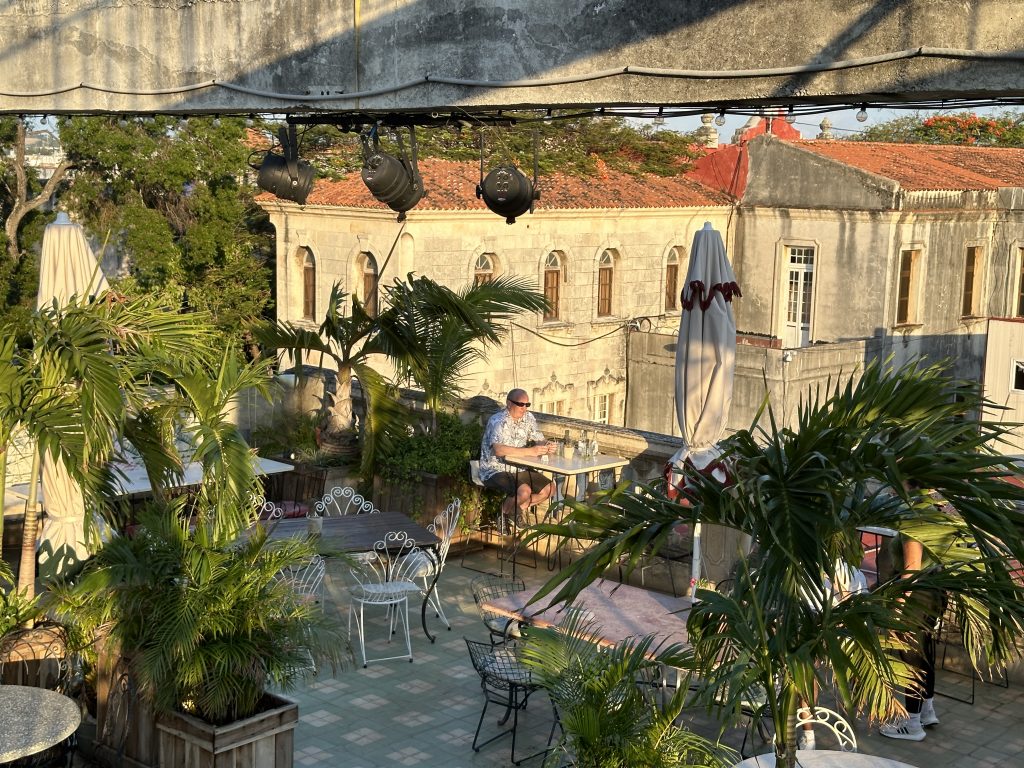
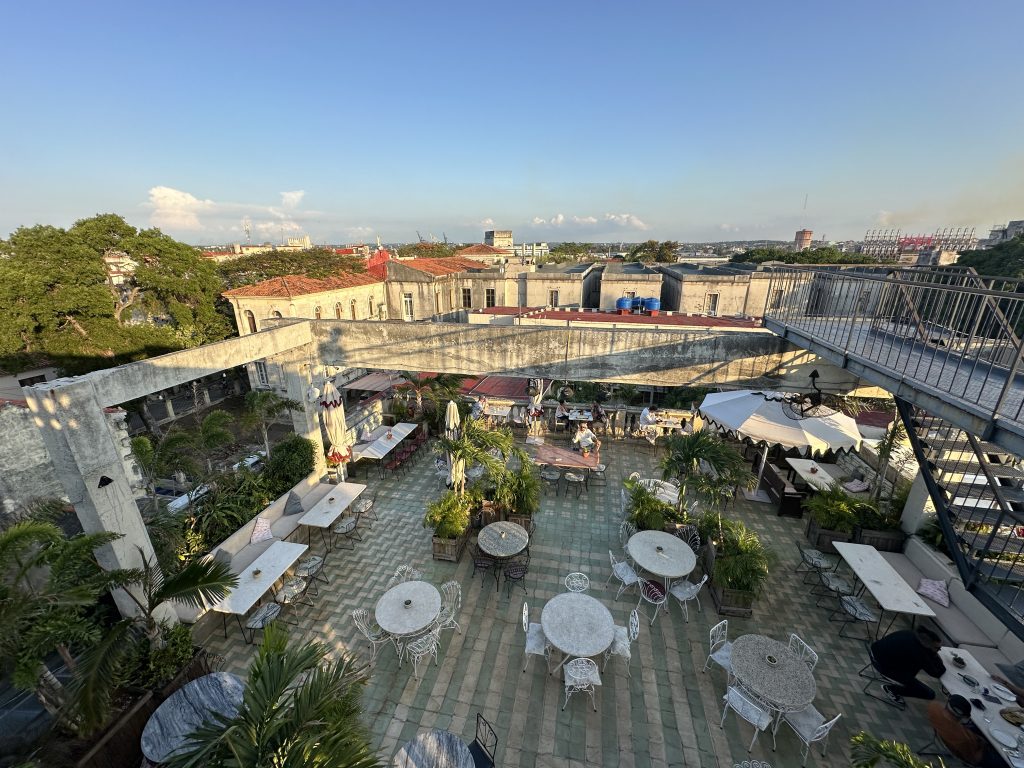
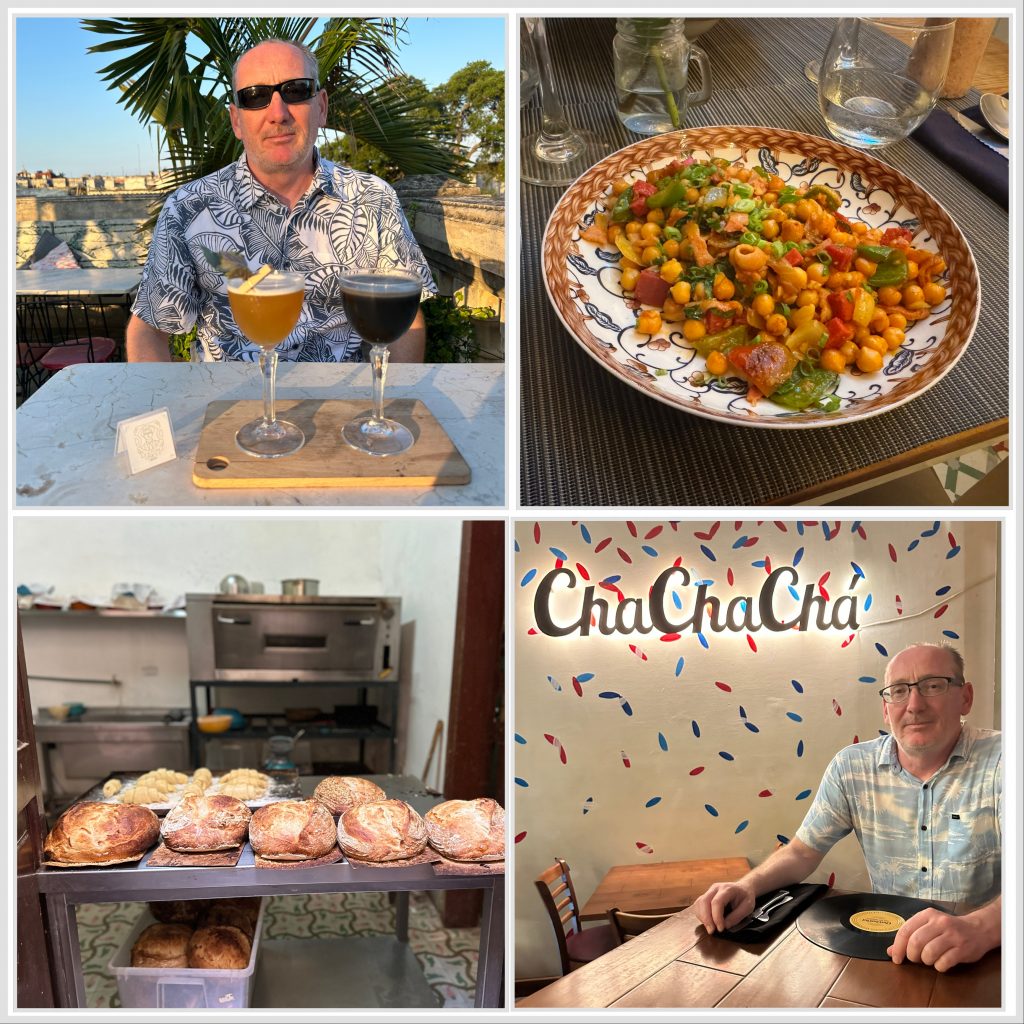
Kicking with live music and a great atmosphere, El Floridita is a classic bar with a whole menu of Daiquiris to choose from. As one of Ernest Hemingway’s favorite haunts, there is Hemingway memorabilia everywhere, including a life sized bronze statue of him at the bar.
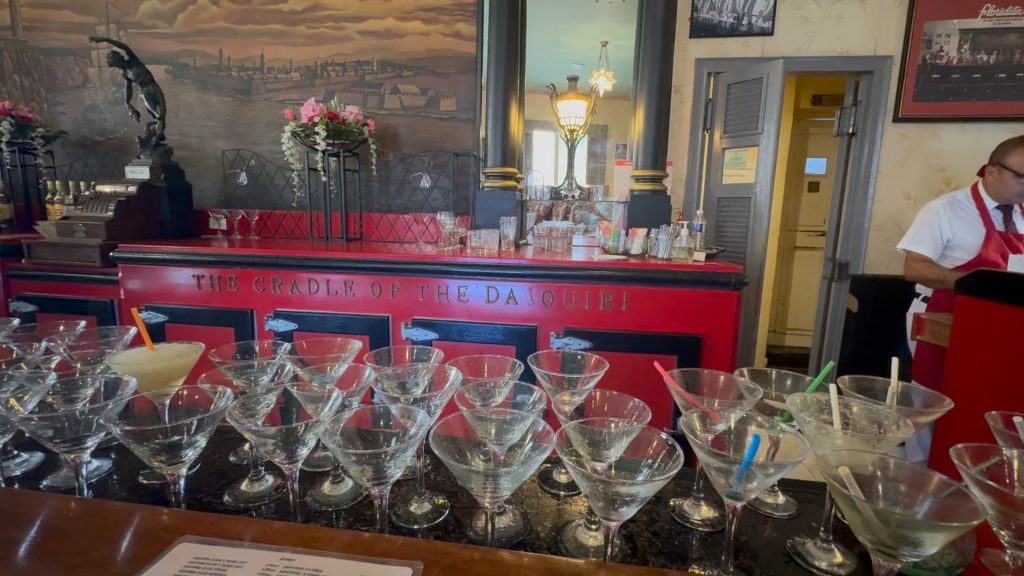
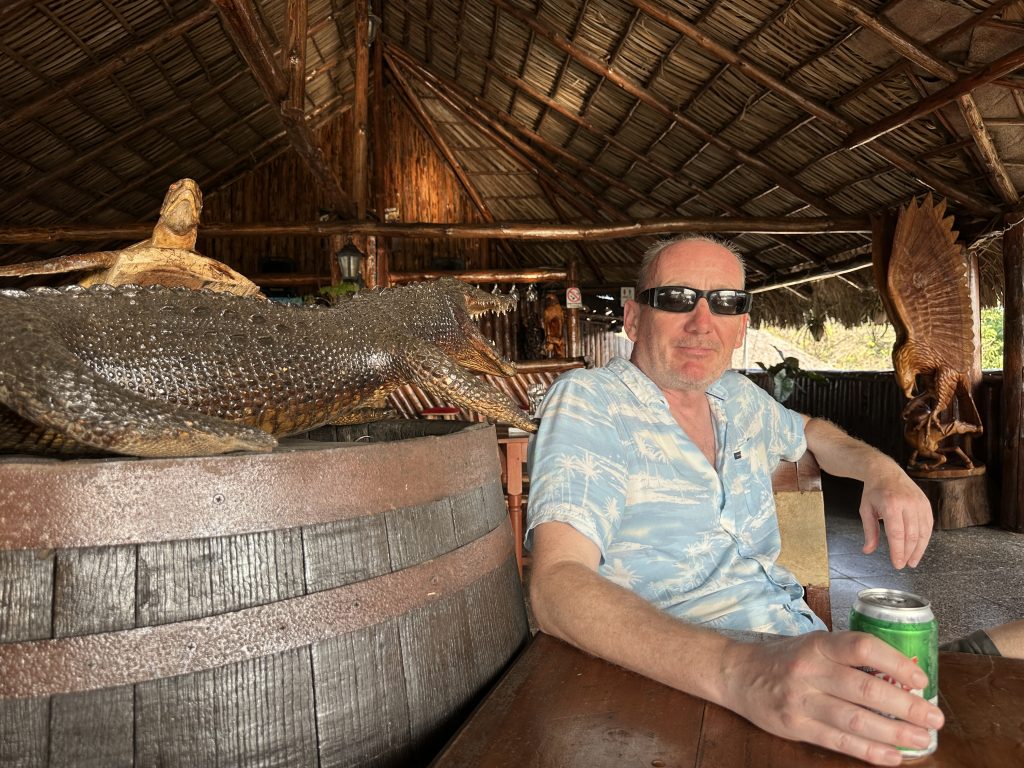
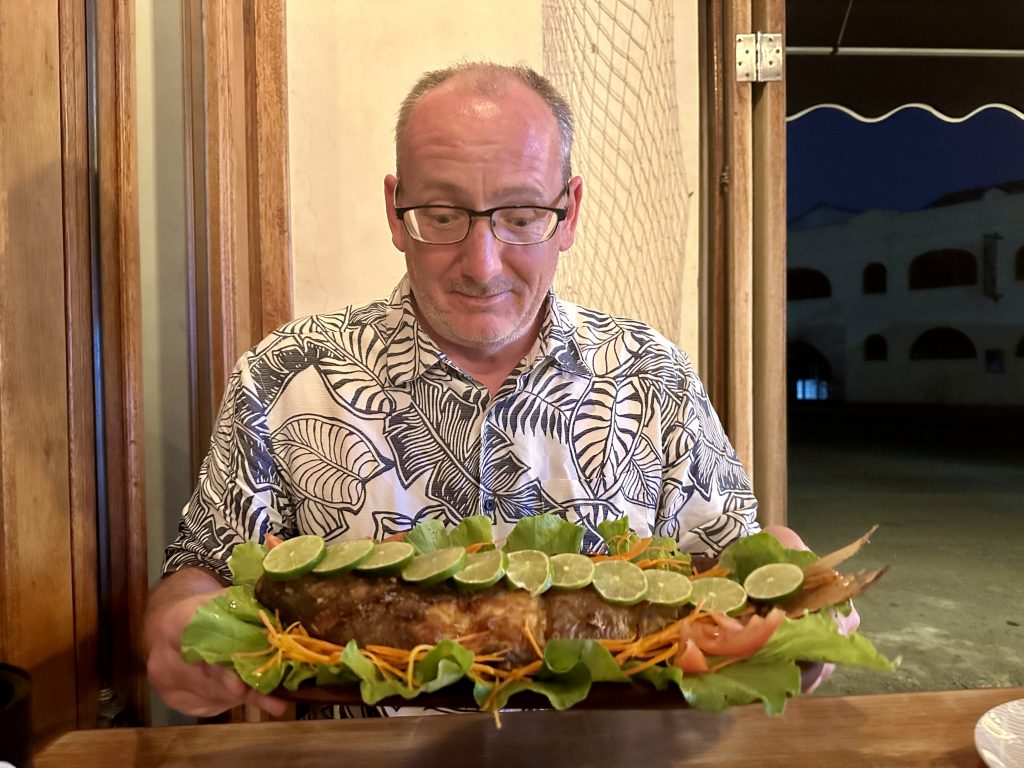
It’s such a shame about the current political situation in Cuba and the whole ban on US tourism thing. Even if there’s enough loopholes to allow any Americans who want to visit to do so, there’s also enough of a a deterrent to put off all except the most persistent. The whole black market money thing and lack of phone connection just introduces more barriers. And yet, Havana seems poised to welcome the world back, a once vibrant city with a whole lot of potential given some love, attention, and tourist dollars.
Rounding off our mini Cuban experience, we finished as we started, with a 1950s classic car. In a hot pink open top Buick decked out with white patent leather seats and pink lights, we cruised along the Malecon to the soundtrack of “Hotel California”. In our element. Classic Cuba indeed.
